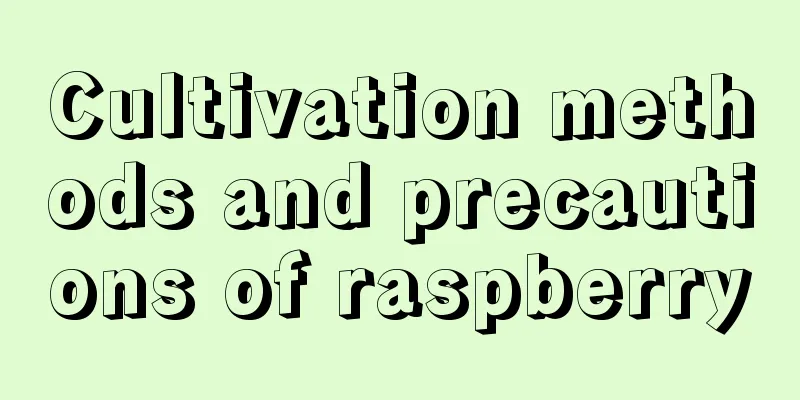Cultivation methods and precautions of raspberry

1. Maintenance methods1. Soil: The requirements of the grass berry on the soil are not high. The common soil on the roadside can be used. You can add nutrients such as peanut crumbs or humus to the soil. 2. Water: It likes a humid environment, so watering is necessary more frequently, once a day is best, and try to keep the soil moist. 3. Nutrients: Raspberry is very resistant to barrenness and can even grow well in wasteland, so there is no need to fertilize it too much. Just add base fertilizer to the soil when planting. 4. Flower pots: You can use plastic flower pots, purple clay pots and other flower pots that are not very permeable. They can help it retain water better. The diameter of the flower pot should be about half a meter. 2. Breeding techniques1. Cuttings: Cuttings can be done all year round. Choose strong branches and dip them in some wood ash after cutting to prevent rotting. Then you can plant the cuttings into the substrate, keep the temperature at around 20 degrees Celsius, and pay attention to moisture retention and ventilation. 2. Pruning: It is a shrub and it will affect its appearance if it is not pruned. You can heavily prune the longer branches to produce more side branches, making the tree look denser. 3. Problem diagnosis and treatment1. Powdery mildew: Powdery mildew may appear on its leaves, petioles, young shoots and flower buds. In the early stage of the disease, many irregular percentage-shaped mold spots will appear. When the disease is serious, the plant will dry up and fall off. You can spray Tefulin for prevention and control. 2. Leaf rust: When the disease occurs, rust-like spots appear on the leaves. In severe cases, large areas of leaves fall off, affecting the ornamental value. If the disease is found, spray triadimefon in time. IV. Other issues1. Is it edible: Its fruit is edible, sweet and sour and juicy, so it is currently widely planted in my country. 2. Can it be planted indoors? It is a shrub and is not suitable for indoor cultivation. It can be placed on a balcony or small yard, away from direct sunlight. |
<<: Breeding methods and precautions of hairy starfish
>>: Cultivation methods and precautions of American dianthus
Recommend
How to propagate nasturtium by cuttings
Pot soil selection You can choose a smaller flowe...
How to save seeds of Clivia
Where do Clivia seeds come from? Clivia, also kno...
How to make cyclamen bloom early
Selected seeds Select seeds and carry out seed tr...
How to make Euphorbia obesa bloom more
In fact, the vigorous growth of Euphorbia obesa d...
How to propagate cockscomb by cuttings
1. Cutting time The time for cuttings is generall...
What are the cultivation methods and precautions for hydroponic white palm?
White Anthurium Introduction White calla lily usu...
How to distinguish melons and chestnuts
1. Blades There are 5-11 leaflets in the gourd ch...
What is the best fertilizer for hydrangea?
Hydrangea fertilization time Hydrangeas can be fe...
What are the current high-end citrus varieties?
1. Jin Man Yuan Tangerine The weight of a single ...
Can I grow lotus at home?
Can I grow lotus at home? You can plant lotus at ...
Tiger Pilan cultivation methods and precautions
Family farming methods Flower pot selection Requi...
The reproduction method of Dendrobium officinale
Propagation by division Reproduction time: After ...
Celery's growing environment and growing conditions
Celery Growth Environment and Conditions Celery i...
Carnation flowering time
1. Time Although its flowering time is determined...
What is the flower language of roses?
1. Flower Language The flower language of rose re...









